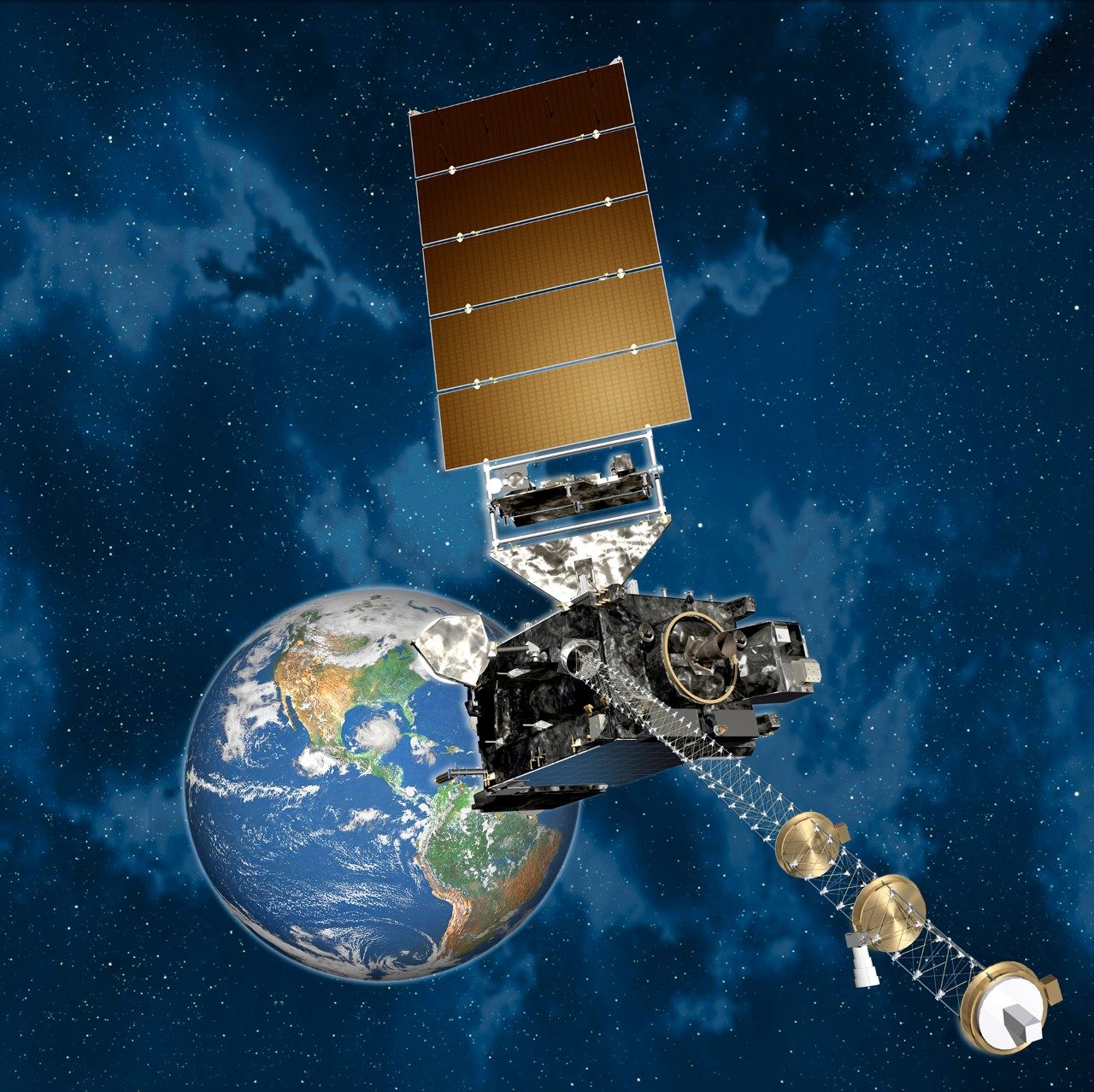“What’s the weather going to be like this weekend?”
It’s a simple question, but finding the answer can become more complicated than you might expect.
One of the earliest weather maps was a crude drawing by Edmond Halley about 300 years ago—before he observed the famous comet he’s better known for—showing an approximation of prevailing wind directions over the oceans of the world. Today, sophisticated satellites peer down at Earth from space and provide information about the incredibly complicated weather patterns that forecasters simply need to have if they’re going to answer that question.
Lockheed Martin essentially invented the weather satellite, having built the world’s first one, called TIROS-1 and launched in 1960, forever changing meteorology. Today, there are two kinds of weather satellites. There are those which orbit hundreds of miles above the Earth, crossing both poles each orbit and covering the entire planet in a full day, collecting global data to feed computer weather models. And those which fly tens of thousands of miles above the equator, orbiting at the same speed as the Earth’s rotation and in so doing remaining “geostationary” as never-sleeping sentinels to keep watch for dangerous storms below.

Monitoring the Americas
The first Geostationary Operational Environmental Satellite (GOES) was launched in 1975, and this series of satellites operated by the National Oceanic and Atmospheric Administration (NOAA) has become essential to monitoring America’s weather. Remaining in their stations above the east and west coasts, the two GOES birds take photographs of Earth from space, sending back a steady stream of images of cloud patterns that allow forecasters to see what’s happening as it happens. At its most basic, this information helps to plan weekends – but more importantly their images and data save lives and protect property. This enables the day-to-day predictions we take for granted, but more importantly, it provides warnings of dangerous weather systems such as hurricanes, thunderstorms and tornadoes. That first GOES-1 satellite was retired in 1985, but NOAA has never been without operational GOES birds in orbit as the geostationary satellite series has continued to evolve. And today, in that evolution, GOES-R is being developed by Lockheed Martin to provide even better capability to support forecasters.
Built on Lockheed Martin’s successful A2100 satellite platform, GOES-R will have the capability to monitor multiple weather events and provide real-time weather forecast information to the NOAA’s National Weather Service. Improved instrument technology on GOES-R includes more visible and infrared channels, four times the imaging resolution and a brand new lightning detection capability. In addition to the spacecraft, Lockheed Martin has also been chosen by NASA to design the Magnetometer, the Geostationary Lightning Mapper, the new Solar Ultra-Violet Imager, which will provide real-time monitoring of the star we live with.
Lockheed Martin has built every TIROS satellite, and all of their Defense Department counterparts known as DMSP, which together add up to 94 total satellites, dating back to that first TIROS 52 years ago. The next phase of weather observation begins in 2015 when GOES-R is scheduled to be launched on an Atlas V launch vehicle from Florida. GOES-R will be the first in a new generation of satellites that will extend the lifetime of the GOES series until at least 2036. As weather predictions becomes more vital to our nation and to the global economy, GOES-R and the subsequent GOES satellites designed and built by Lockheed Martin will play a vital role in providing faster and more accurate forecasts and warning of severe weather events long into the future. These are our weather sentinels in the sky.




